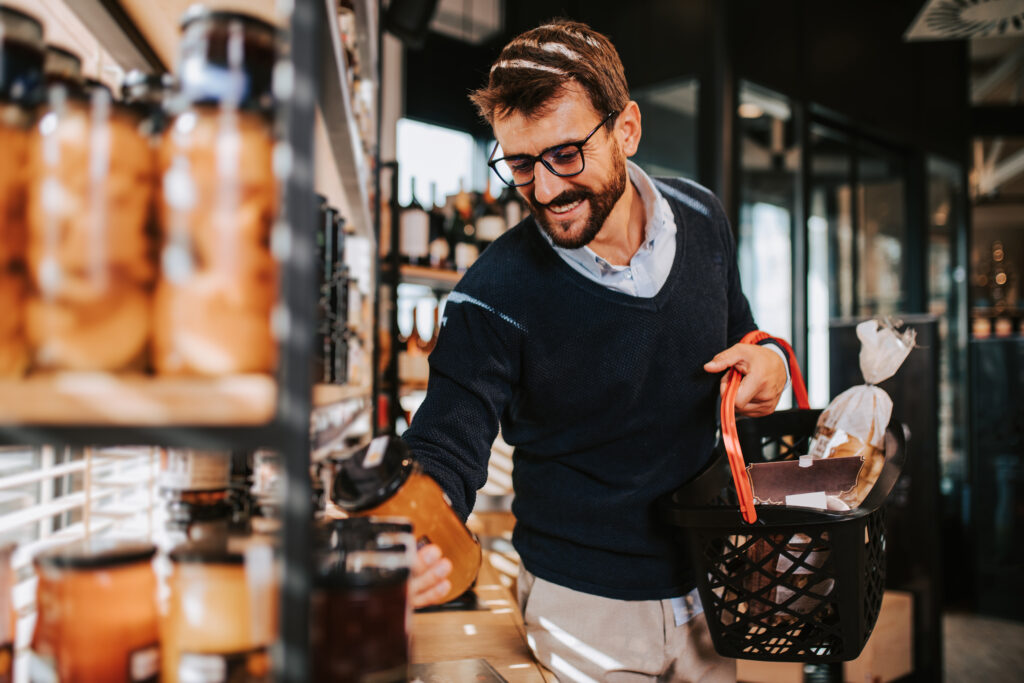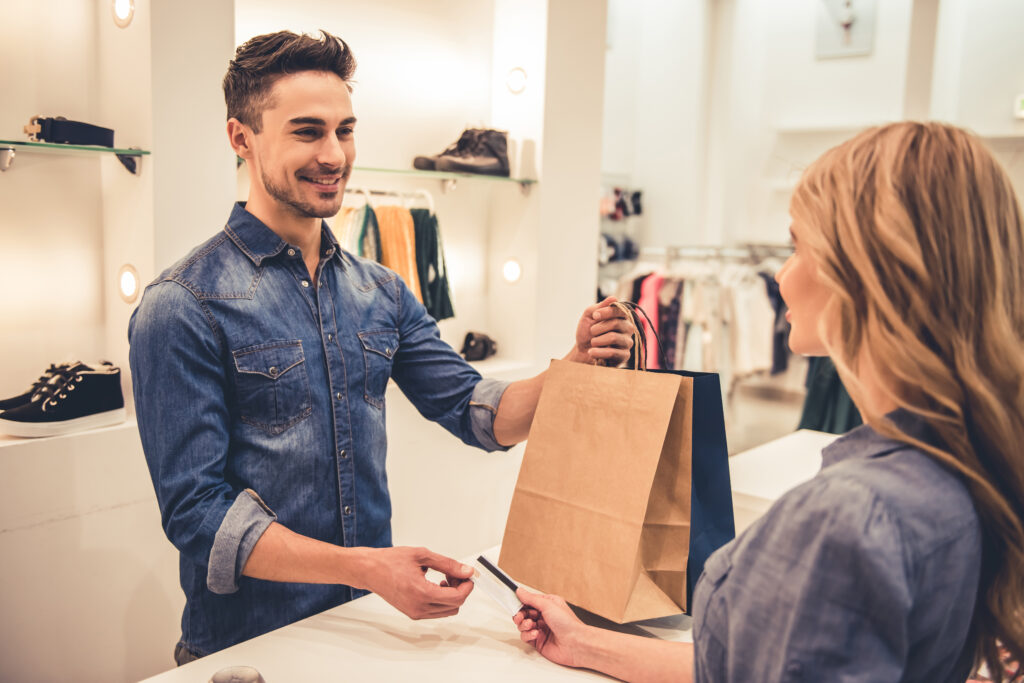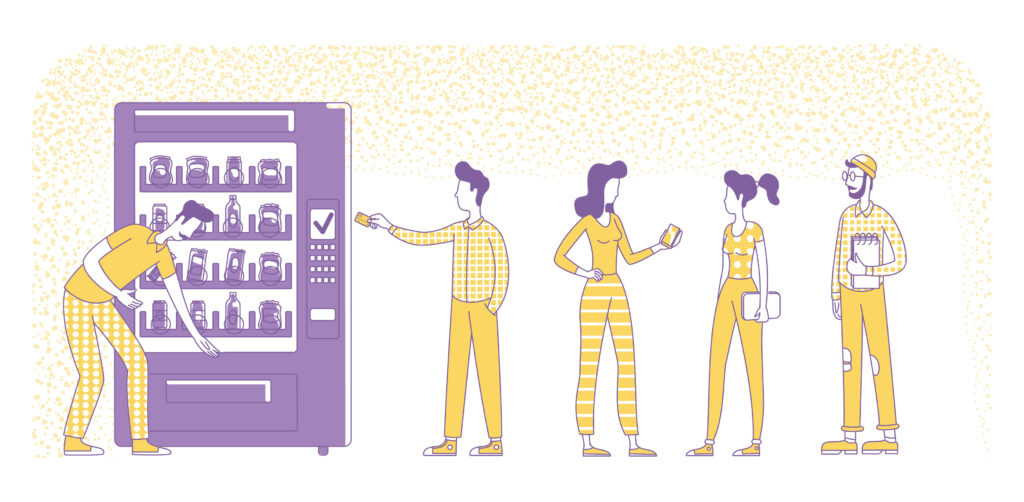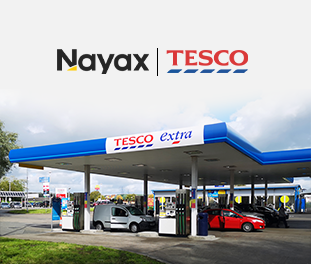Running a successful customer loyalty and engagement program in 2022 and beyond
Since 2020, the COVID-19 pandemic and inflationary pressures have fundamentally changed the way people shop, eat, travel, and interact, the need for keeping customers engaged has become greater than ever.
So, how do you build a loyal customer base without resorting to deep discounts every time you want to move a product? How do you keep getting high-value consumers in the door without sacrificing profit for marketing efforts?
Here’s everything you need to know about increasing customer loyalty and engagement in 2022 and beyond.
What is Customer Engagement?
Let’s begin with the basics. You have no doubt heard of retail terminologies such as customer engagement and brand loyalty. But what do they actually mean for your business?
At a high level, customer engagement can be defined as the process of interacting with your customers through a variety of channels and encouraging brand loyalty in them so they are encouraged to spend more on your business. At its core, though, customer engagement refers to building meaningful, personal relationships with your customers that go beyond monetary transactions. This applies to both attended and unattended retail.

Challenges with Attended Retail
Before the advent of the digital era, customer engagement wasn’t something a retailer had to think about too much. People typically shopped locally from a select few, favorite brands. The sales staff there didn’t just greet customers by their name, but were intimate enough to know their likes, dislikes, and even what grade their children were studying in! The intimacy of the in-store shopping experience ensured that the customer would develop an emotional bond with the brand.
Today, the challenge is that consumers expect the same level of understanding and personalization. But not even half of companies (47%) are personalizing their marketing communication based on real-time customer behavior. Instead of offering warmth and amity, retail environments have become clinical and impersonal.
When consumers are not offered a highly engaging and relevant shopping experience, it becomes easier for them to choose something different and take their business elsewhere. This is exactly what happened during the pandemic when three-quarters of consumers switched to a new store, product, or buying method.
Where Unattended Retail Lags
The problem of insufficient customer engagement becomes even starker in unattended retail because the industry’s business model revolves around “machines.” In this kind of model, there’s no human interaction or personalization. Often, there is no feedback loop either.
So, while vending machines offer the convenience of “anytime, anywhere” shopping, there is no real reason for a customer to stick to one particular brand if the product they want is available through multiple vending operators.
Clearly, this needs to change.
Ask us about our loyalty solutions
How Does Customer Loyalty Impact Revenue?
In today’s hyper-competitive retail environment, customer engagement has become the key differentiator that can help a business stay ahead of the curve. Engage customers properly and you turn them into brand advocates. You ensure that they will not be swayed by the competition that is vying for their attention. You make them come back to do business with you. And the benefits don’t stop there.
“It sounds crazy, but the reality is that the people best equipped to sell your product might be… the people who have already purchased your product,” Inc. Magazine says, stressing that nurturing and mobilizing customers as brand advocates can create an unbridled potential for revenue generation.
In a global survey of more than 25,000 consumers in 33 countries, 57 percent revealed they spend more on brands or providers to which they are loyal. Not just that, but 39 percent of loyal customers are willing to spend more on a product, even if there are other less expensive options available.
Meanwhile, retailers that design their engagement and loyalty programs toward building an emotional connection with the consumer can witness additional benefits. According to a Capgemini study, more than 80 percent of emotionally connected consumers will not only promote the brand among their family and friends, but will also spend more. At the same time, 70 percent of consumers with high emotional engagement are known to spend up to twice as much with those brands.
In a time when inflation is a cause of concern across the board, these factors cannot be discounted. But what if we told you this is only the tip of the iceberg when considering your potential revenue?
Multiple consumer studies have found that acquiring a new customer can be anywhere from 5 to 25 times more expensive than retaining an existing one. But, if you’re able to improve your customer retention rates by just 5 percent, you could see profits increase by up to 95 percent.
Customer Engagement Solutions for Attended Retail

1. Tracking Customer Journeys
Most businesses know that in order to engage with their customers, they first need to get to know them better. But what’s surprising is that while nearly one-third of loyalty program members in the US are willing to share their personal information in exchange for more rewarding shopping experiences, fewer than 25 percent of loyalty programs actually utilize the customer information available to them.
So, on the one hand, you have a handful of marketing programs that personalize experiences based on previous interactions with members, their purchase history, and stated or inferred preferences. And on the other, there are retailers struggling to keep up with the entirety of a customer journey because they don’t realize they are working with outdated data.
The trick is to go beyond entry-level tactics and implement dynamic strategies that are tailored specifically and continually to your product and customer persona. This means that you really have to get to know your customers and understand how they feel about their brand, what kind of services they desire, and what more your brand can do to add value to their experience.
One way to do this is to connect with your customers across platforms such as Facebook, Google, Salesforce, Eloqua, HubSpot, and Magento to gain greater insights into their needs and desires. This will give you the ability to plan each step of the customer journey in a manner that ensures that no consumer leaves without making a purchase from your store.
2. Personalizing Offers
The role of smartphones and mobile apps in shopping simply cannot be discounted. Even those shoppers who like to “touch” and “feel” a product before committing to it are known to shortlist a few options online. Shoppers this savvy do not want to waste time browsing. They expect brands to offer extremely relevant suggestions and offers and to show them what they are looking for, even before they realize it’s something that they want.
Even email campaigns have evolved. Gone are the days of one-size-fits-all marketing, where using the first name of the shopper in a newsletter qualified as the epitome of personalization. Now, to build a truly loyal customer base, you need especially curated, valuable content that leads to customized landing pages going out to particular email groups.
Your aim should be to make sure the content is relevant to the receiver. Personalize the discounts and coupon codes you are offering based on both the customers’ past orders and their future needs. For example, someone who purchased a printer from you two months ago might be in need of a fresh ink cartridge now. Reach out to them.
This kind of post-purchase engagement serves the dual purpose of enhancing involvement and showing the customer that you care for them. In a similar fashion, you could send customers product tips and tricks specific to their past purchases. You could offer tutorials and instructional videos on how to use the product, or share unique usage ideas from other customers.
In the long run, keeping customers engaged online even after they have made the purchase will help to ensure that they come back to your store when a need arises.
Ask us about our loyalty solutions
3. Optimizing Marketing Spend
Did you know that 80 percent of the business revenue typically comes from just 20 percent of customers? So, if your business focused more attention on the top 20 percent of its customers, you may actually end up spending your marketing budget in the most optimal manner.
American Express, a company that’s obsessed with customer satisfaction, suggests making the top 20 percent of customers feel like VIPs by offering them exclusive discounts, gifts, services, and early access to new products as rewards.
Exclusivity is something that today’s customer expects from a loyalty program experience. In a recent online poll, 50 percent of the respondents said that receiving special treatment not available to other customers was important to them.
4. Enhancing In-Store Execution
How a customer perceives your brand also depends on how well your business caters to their in-store behavior. For example, self-checkout and instant checkout have lately emerged as preferred checkout modes for consumers. People do not want to spend their time in line; they want to be in and out of the store quickly.
Cater to your customer’s desire for convenience by offering self-checkout, cashless payment options, or by using a mobile Point of Sale (POS) device that can be carried anywhere to complete a purchase. Modern handheld POS devices such as Nova 45 come with an array of useful features including the ability to scan products, accept payments through multiple methods (NFC, QR codes, cash, credit cards, etc.), and implement promotions and loyalty programs.
5. Omnichannel Retail Solutions
We are at a time when shoppers are moving between online browsing and brick-and-mortar purchasing more fluidly than ever. When Harvard Business Review surveyed 46,000 shoppers, they found that only 7% of shoppers made purchases exclusively online, 20 percent were store-only shoppers, and 73% moved across multiple channels.
From a marketing point of view, this had made the customer journey even more complex. But one brand that has really cracked customer engagement through omnichannel marketing is Starbucks.
The coffee giant uses its loyalty program, Starbucks Rewards, to incentivize purchases while allowing members to buy their java through walk-ins, in-app orders, or online ordering. No matter the choice of channel, customers are able to access their reward points and see their accounts being updated in real-time across different platforms.
Starbucks also connects offline and online experiences in a masterful manner, allowing patrons to place their order through the mobile ahead of time and bypass the queue when they come to pick it up at the store. The end result is that in Q1 FY22, Starbucks Rewards members contributed 75% of all US sales.
For a business to make strategic decisions as Starbucks does, it first needs to understand exactly how its customers make purchases. This cannot be done without analyzing omnichannel consumer behavior trends in totality.
For a small and medium business, leveraging omnichannel marketing can seem daunting. But rather than trying to target each possible channel individually, you can use robust data tools to analyze consumer behavior and channel your efforts more effectively.
One of the simplest ways to bridge the gap between a customer’s online and in-store activities is using a growth-focused marketing solution such as Weezmo that combines disparate datasets to take all the guesswork out of the picture. Weezmo uses unique identifiers to connect every attribution point including social channels, eCommerce stores, physical stores, and digital receipts. In this manner, retailers gain full visibility of their customers’ journeys and get a chance to turn those touchpoints into engagement opportunities.
When retailers are armed with relevant customer insights, they can emphasize “buy online, pick up in store” programs as well to get rid of excess inventory. If a customer can be incentivized to get out of their car and into a store, they can be lured to make an impulse purchase too. Targeting the right customers with the right offers creates opportunities for more foot traffic and leads to an increase in the sales of well-priced and discounted products.
Did you know that in an online survey conducting research about consumer shopping choices, nearly half of shoppers (49 percent) said they have purchased a product that they did not initially intend to buy after receiving a personalized recommendation from a brand? As many as 40 percent of American shoppers admitted to purchasing something more expensive than they originally planned because their experience was personalized. And a whopping 85 percent of impulse buyers said that they were happy with their purchase.
So, no matter the channel your customers prefer, having a comprehensive view of their purchase history and online behavior can help you cater to their requirements. It also helps to be proactive with customer issues. If someone who made an in-store purchase is now tweeting about an issue with the product, your customer support team should be proactive enough to ensure that the problem is resolved as soon as possible. Communication that reflects empathy becomes key in such scenarios. Customers appreciate being heard, which means that while you are taking care of their requests, let them know that you are listening by sending a friendly reply back first.
Ask us about our omnichannel solutions
Customer Engagement Solutions for Unattended Retail
1. Digital Loyalty Programs
It’s a universal truth that people love free stuff. No matter the size of the reward, the sheer anticipation of a gain becomes the impetus that brings a customer back to the same vendor.
A digital loyalty program, such as the one offered by the Monyx Wallet payment app by Nayax, can help facilitate just that. One of the most popular features of the loyalty platform is digital punch cards.
These are fashioned after traditional punch cards that a business such as a coffee shop would stamp for a customer after every purchase to offer loyalty rewards. But unlike physical cards, digital punch cards can be accessed on your phone anytime. In many ways, they trump paper cards that can be lost or forgotten at home. When a transaction is recorded automatically in a mobile app, it becomes easier for a business to track the impact of its loyalty program.
Moreover, campaign creation is a no-brainer. You begin by customizing the parameters for the promotion: choosing how much the customer would need to spend for a purchase to count towards a punch, or which products count towards a punch, or how many punches are needed for a customer to receive their free item. Since everything is online, you are able to ensure that the punch card program is tailored specifically to your business needs.
This is an approach that is known to deliver solid results. Consider the following case study results as evidenced by a case study conducted with T Vend:
Sales Jump 30% for UK Vending Machine Opearator
T Vend was recently able to increase its sales by 30% using consumer engagement solutions by Nayax. The UK-based vending machine operator launched a two-part campaign that saw not only the sales going up steadily but also more customers becoming regular shoppers. Here’s how the campaign worked:
In the first part, T Vend used the Monyx Wallet to create digital punch cards. After every nine purchases made through cashless payment methods, the 10th product was made available to the customer for free.
The second part of the promotional campaign leveraged a gamification model called “Shake and Win.” In this, customers received up to 10 percent of their shopping amount as cashback simply by shaking the Monyx payment app on their phones after each purchase.
In just three months after launching this campaign, T Vend’s sales increased by 30 percent while the volume of transactions grew by 80 percent. At the same time, cashless sales saw a jump of 40 percent, with the ratio of cashless to cash vends becoming an extremely healthy 70:30.
2. Digitizing Refunds
An unattended retail business relies on a customer’s trust and willingness to buy. When a product jam or no-vend situation occurs, customers often do not know how to claim a refund. Digital solutions such as Monyx Wallet can save a business from a lot of hassle and reduce the operational cost of refunds by digitizing the refund process and making it instantaneous. And naturally, when a customer gets a refund while they are still at the machine, it increases customer loyalty.
3. On-The-Go Machine Monitoring
In the same vein, it’s important to note that empty shelves don’t make a business any money. For a customer, encountering empty racks is extremely frustrating because it shakes up their trust in the brand. And they either leave empty-handed or switch over to a competitor, both of which eat into any progress the business may have made on the customer loyalty front.
One way to ensure that you know the exact amount and types of products missing from each machine is to use smart inventory management platforms such as Nayax Core, formerly known as NayaxVend and the MoMa app.
These solutions streamline all data and information flows (inventory, pricing, payments, etc.) to a single platform and also help to distill customer preferences and buying habits. Knowing which products are desired most by customers and how fast they typically sell out makes restocking easier through pre-kitting and brings down operating expenses.
In addition, Nayax Core and MoMa app come with several customer engagement solutions built-in, including loyalty cards, happy hours, “members-only” promotions, and branded top-up websites.
In a Nutshell
For any business to succeed, it needs to establish a connection with its customers. But in today’s overcrowded, digital-first retail landscape, customer engagement and loyalty are easier said than done.
When the goal is to optimize customer interactions across channels in an attended retail business, it is recommended to find a partner who not just studies market trends to stay ahead of the curve but also offers comprehensive solutions to cover all bases.
Nayax unifies customers’ digital behavior with their in-person shopping experience and helps businesses break through the noise of generic messaging. The company’s highly-customizable customer loyalty and engagement platforms are supplemented further by its end-to-end POS management, cashless payment, and marketing solutions.
At the same time, Nayax’s complete consumer engagement, marketing, and loyalty platforms enable vending machine operators to take cashless payment systems to a new level by offering discounts and punch cards.
Contact us here to learn more about our complete suite of solutions for both attended and unattended retail businesses.



